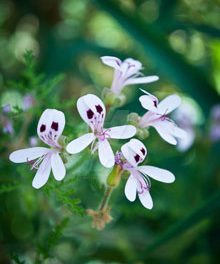It is appropriate that the first principle of a Carolina Yard and Neighborhood is “Right Plant, Right Place.” Establishing the right plant in the right place makes the other eight principles much easier to obtain. Right plant, right place consists of planning and design. Although picking out the actual plants for your landscape is often the first thing done, it should be that last step in planning and design. The steps of appropriate design are: determine needs for the area, determine maintenance levels, determine site conditions, create your design plan, and lastly, choose plants to meet needs and conditions.
In determining the needs for the area, consider what it is you want out of your landscape. Do you want an area for entertaining, an area for play, a butterfly garden or to add aesthetic value to your home? Also consider other functions of the landscape such as screening noise from roads or unwanted views, using plants to help conserve energy or reduce stormwater runoff. After determining what you desire from the landscape, decide the level of maintenance you want. Remember, large turf areas require more maintenance in terms of water, mowing, fertilizing, and pest control. Next, determine your site conditions. Do you have clay or sandy soil? Where are low drainage areas? Where does the yard get full sun, part sun or full shade? What is the acidity of your soil? If you have questions of soil analysis contact the Clemson Extension Service.
Creating the design plan requires a little paper work. You can draw a base map of your home or obtain the building plat to use. Note all features such as sidewalks, existing plants, overhead lines, underground lines, etc. on this map. With this map and with the notes you made on needs and site conditions, you can decide the plant types you need. For example if you noted that you have an area in the front yard where you would like a tree to provide summer shading and some color, but is a poor drainage spot, then that significantly narrows down the plants to choose from. It is much better to choose a plant to fit a particular spot than it is to try to make a spot fit a particular plant. When you have decided the specifics of the plant types you need (height, spread, water and sun requirements, and color) then you can visit a nursery or sit down with reference books to find plants that will suit all the requirements. When we plant the right plant in the right place it automatically requires less maintenance. By providing the optimum growing conditions, plants should be more tolerant to disease and insects.
Some of the best plants to consider during the design process are native plants. Native plants are already adapted to the climate, diseases and insects of the Lowcountry. They generally require no fertilizer or pesticides once established. For more information on native plant options contact the Clemson Extension office or Home and Garden Information Carolina Yards and Neighborhoods.
http://www.clemson.edu/extension/hgic/
http://www.clemson.edu/extension/natural_resources/water/carolina_yards/








